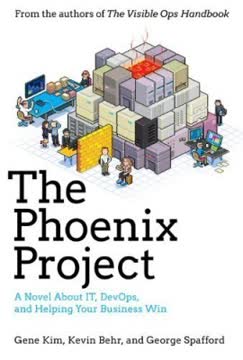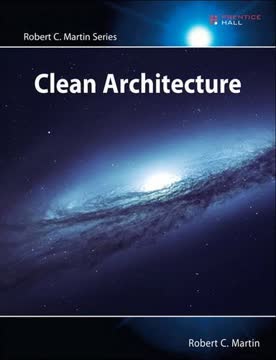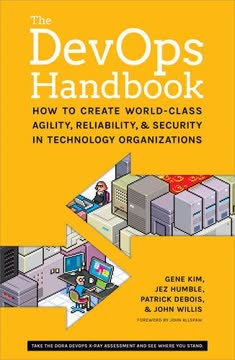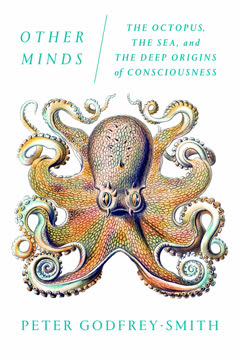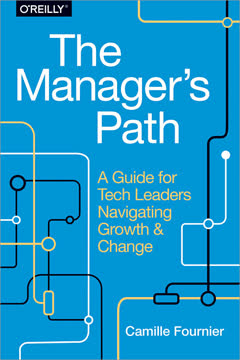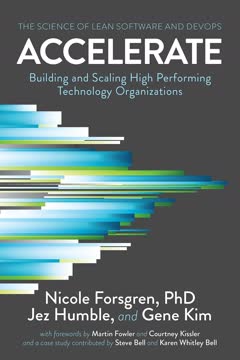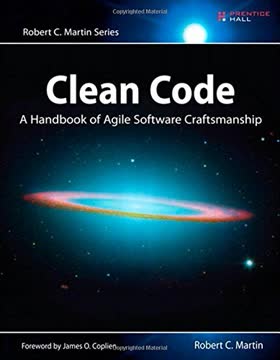가지 주요 요점
1. 제로 트러스트 네트워크: 사이버 보안의 패러다임 전환
제로 트러스트 모델은 이 다이어그램을 뒤집습니다.
보안의 근본적인 변화. 제로 트러스트 네트워크는 전통적인 경계 기반 모델을 버리고 혁신적인 사이버 보안 접근 방식을 대표합니다. 네트워크 내에서 신뢰를 가정하는 대신, 제로 트러스트는 사용자나 장치가 기업 네트워크 내부에 있든 외부에 있든 기본적으로 신뢰하지 않습니다. 이 모델은 다음을 요구합니다:
- 모든 네트워크 요청에 대한 인증 및 권한 부여
- 전송 중인 모든 데이터의 암호화
- 보안 상태의 지속적인 모니터링 및 검증
핵심 원칙:
- 네트워크는 항상 적대적이라고 가정합니다
- 외부 및 내부 위협이 항상 존재합니다
- 네트워크 위치는 신뢰를 결정하는 데 충분하지 않습니다
- 모든 장치, 사용자 및 네트워크 흐름은 인증 및 권한 부여를 받아야 합니다
- 정책은 동적이어야 하며 여러 데이터 소스에서 계산되어야 합니다
2. 경계 모델의 종말: 제로 트러스트 아키텍처 수용
정책을 위한 신뢰 점수 모델로 전환하는 것은 단점이 없지 않습니다.
네트워크 보안의 진화. 방화벽과 VPN을 사용하여 "안전한" 내부 네트워크를 만드는 전통적인 경계 모델은 오늘날의 복잡하고 분산된 IT 환경에서는 더 이상 충분하지 않습니다. 제로 트러스트 아키텍처는 다음을 통해 경계 모델의 한계를 해결합니다:
- 신뢰할 수 있는 내부 네트워크 개념 제거
- 모든 리소스에 대한 강력한 인증 및 권한 부여 구현
- 측면 이동을 제한하기 위한 마이크로 세그멘테이션 적용
- 전송 중 및 저장 중인 데이터를 보호하기 위한 암호화 사용
제로 트러스트의 이점:
- 외부 및 내부 위협에 대한 보안 태세 개선
- 네트워크 트래픽에 대한 가시성 및 제어 향상
- 공격 표면 감소 및 침해 시 폭발 반경 제한
- 네트워크 관리 간소화 및 VPN 의존도 감소
3. 신원 및 접근 관리: 제로 트러스트의 초석
인증에는 또 다른 흥미로운 속성이 있습니다.
신원은 중요합니다. 제로 트러스트 모델에서 강력한 신원 및 접근 관리(IAM)는 기본입니다. 모든 사용자, 장치 및 애플리케이션은 검증 가능한 신원을 가져야 하며, 접근 결정은 이러한 신원과 관련된 속성을 기반으로 이루어집니다.
제로 트러스트에서의 IAM의 주요 구성 요소:
- 모든 사용자에 대한 다중 요소 인증(MFA)
- 사용자 역할 및 속성에 기반한 세분화된 접근 제어
- 지속적인 인증 및 권한 부여
- 신원 연합 및 싱글 사인온(SSO) 기능
- 실시간 위험 평가에 기반한 동적 정책 시행
신뢰 점수: 다음과 같은 요소를 고려하는 동적 신뢰 점수 시스템을 구현합니다:
- 사용자 행동 패턴
- 장치 상태 및 준수 여부
- 접근 위치 및 시간
- 요청된 리소스의 민감도
4. 장치 신뢰: 제로 트러스트 네트워크에서의 엔드포인트 보안
제로 트러스트 네트워크에서 장치를 신뢰하는 것은 매우 중요하지만, 또한 매우 어려운 문제입니다.
엔드포인트 보안은 필수적입니다. 제로 트러스트 네트워크에서 장치는 공격자의 잠재적 진입점이므로 철저히 보안되고 지속적으로 모니터링되어야 합니다. 장치 신뢰의 주요 측면은 다음과 같습니다:
- 인증서를 사용한 강력한 장치 인증 또는 하드웨어 기반 자격 증명
- 장치 상태 및 준수 여부의 지속적인 평가
- 자동 패치 및 업데이트
- 엔드포인트 탐지 및 대응(EDR) 기능
- 장치 격리 및 원격 삭제 기능
장치 신뢰 구현:
- 강력한 장치 인벤토리 및 관리 시스템 구축
- 안전한 장치 온보딩 프로세스 구현
- 가능한 경우 하드웨어 보안 모듈(HSM) 또는 신뢰할 수 있는 플랫폼 모듈(TPM) 사용
- 장치 자격 증명 및 인증서 정기적으로 회전
- 이상 징후 및 잠재적 침해를 위해 장치 행동 모니터링
5. 애플리케이션 보안: 코드에서 실행까지 신뢰 구축
장치를 신뢰하는 것만으로는 충분하지 않습니다. 코드와 그 코드를 작성한 프로그래머도 신뢰해야 합니다.
전체 파이프라인 보안. 제로 트러스트 환경에서의 애플리케이션 보안은 실행 중인 애플리케이션을 보호하는 것 이상을 포함합니다. 소프트웨어 개발 생명 주기 전체와 런타임 환경을 포괄합니다. 주요 고려 사항은 다음과 같습니다:
- 안전한 코딩 관행 및 개발자 교육
- 정기적인 코드 리뷰 및 정적 분석
- 취약성 스캐닝 및 침투 테스트
- 런타임 애플리케이션 자가 보호(RASP)
- 애플리케이션 행동의 지속적인 모니터링 및 로깅
애플리케이션 신뢰 조치:
- 배포된 애플리케이션의 무결성을 보장하기 위해 코드 서명 사용
- 애플리케이션 수준의 암호화 및 접근 제어 구현
- 애플리케이션 간 통신을 제한하기 위해 마이크로 세그멘테이션 사용
- 컨테이너화된 애플리케이션을 위한 컨테이너 보안 및 오케스트레이션 도구 활용
- 애플리케이션 권한을 위한 적시(JIT) 및 최소 권한(JEA) 원칙 구현
6. 네트워크 트래픽 보안: 암호화, 인증 및 권한 부여
암호화는 기밀성을 제공하지만 때로는 성가신 일이 될 수 있습니다.
모든 통신을 보호합니다. 제로 트러스트 네트워크에서는 모든 트래픽이 출발지나 목적지에 관계없이 암호화, 인증 및 권한 부여되어야 합니다. 이 접근 방식은 데이터 기밀성과 무결성을 보장하고 무단 접근 및 측면 이동을 방지합니다.
네트워크 트래픽 보안의 주요 측면:
- 강력한 암호화 프로토콜 사용(예: TLS 1.3, IPsec)
- 모든 네트워크 연결에 대한 상호 인증
- 네트워크 세그멘테이션 및 마이크로 세그멘테이션
- 소프트웨어 정의 경계(SDP) 또는 블랙 클라우드 아키텍처
- 네트워크 트래픽 패턴의 지속적인 모니터링 및 분석
구현 전략:
- 인증서 관리를 위한 공개 키 인프라(PKI) 배포
- 세분화된 접근 제어를 위한 프로토콜 인식 프록시 구현
- 레거시 시스템을 위한 네트워크 암호화 게이트웨이 사용
- 위협 탐지를 위한 네트워크 탐지 및 대응(NDR) 도구 활용
- DNS 보안 조치(DNSSEC, DoH, DoT) 구현
7. 제로 트러스트 구현: 점진적이고 실용적인 접근
제로 트러스트는 네트워크에서 신뢰할 수 있는 통신이 이루어지도록 권한 부여 결정의 결과를 주입하는 제어 평면을 옹호합니다.
단계적 구현. 제로 트러스트 모델로의 전환은 신중한 계획과 실행이 필요한 중요한 작업입니다. 점진적이고 단계적인 접근 방식은 기존 운영에 대한 방해를 최소화하면서 이점을 실현할 수 있게 합니다.
제로 트러스트 구현 단계:
- 현재 보안 상태 평가 및 격차 식별
- 제로 트러스트 목표 및 우선순위 정의
- 파일럿 프로젝트 또는 특정 사용 사례로 시작
- 강력한 신원 및 접근 관리 구현
- 장치 보안 및 관리 강화
- 애플리케이션 및 워크로드 보안
- 네트워크 세그멘테이션 및 트래픽 암호화 구현
- 모니터링 및 분석 기능 배포
- 제로 트러스트 모델을 지속적으로 개선 및 확장
주요 고려 사항:
- 조직 전반의 이해관계자 참여
- 채택을 보장하기 위한 사용자 경험에 중점
- 가능한 경우 기존 보안 투자 활용
- 클라우드 및 하이브리드 환경과의 통합 계획
- 제로 트러스트 구현의 효과를 측정하기 위한 지표 개발
8. 인간 요소: 제로 트러스트에서의 사회 공학 및 물리적 보안
신뢰할 수 있는 장치에서 신뢰할 수 있는 인간을 속여 행동을 취하게 하는 사회 공학 공격은 여전히 제로 트러스트 네트워크에서 큰 우려 사항입니다.
인간의 취약성은 여전히 존재합니다. 제로 트러스트가 기술적 보안을 크게 향상시키지만, 인간 요소는 여전히 잠재적인 약점으로 남아 있습니다. 사회 공학 공격, 내부자 위협 및 물리적 보안 위험은 기술적 통제와 함께 해결되어야 합니다.
인간 중심의 위험을 해결하기 위한 전략:
- 모든 직원에 대한 포괄적인 보안 인식 교육
- 시뮬레이션 피싱 및 사회 공학 연습
- 민감한 정보 처리에 대한 명확한 정책 및 절차
- 물리적 보안 조치(예: 접근 제어, 감시)
- 배경 조사 및 정기적인 보안 클리어런스 검토
- 내부자 위협 탐지 및 예방 프로그램
보안과 사용성의 균형:
- 사용자 친화적인 보안 도구 및 프로세스 구현
- 보안 조치에 대한 명확한 설명 제공
- 다양한 사용자 요구에 맞는 여러 인증 옵션 제공
- 사용자를 부담시키지 않고 이상 징후를 탐지하기 위한 행동 분석 사용
- 정기적으로 피드백을 수집하고 정책을 조정하여 사용자 경험 개선
인간 중심의 보안 조치는 제로 트러스트의 기술적 측면을 보완하여 전체적이고 탄력적인 보안 태세를 만듭니다.
마지막 업데이트 날짜:
FAQ
What's Zero Trust Networks about?
- Security Paradigm Shift: Zero Trust Networks by Evan Gilman introduces a security model that assumes no trust in any network, internal or external, requiring verification for every access request.
- Framework for Secure Systems: The book provides a comprehensive framework for designing secure systems in untrusted environments, moving away from traditional security assumptions.
- Holistic Approach: It covers user, device, and application trust, offering strategies to manage these elements within a zero trust architecture.
Why should I read Zero Trust Networks?
- Modern Threats Addressed: The book is crucial for understanding and combating cybersecurity threats that exploit traditional perimeter defenses.
- Practical Guidance: It offers actionable design patterns and considerations for real-world systems, valuable for network engineers and security professionals.
- Expert Insights: Authors Evan Gilman and Doug Barth share their extensive experience with zero trust principles across various organizations.
What are the key takeaways of Zero Trust Networks?
- Assume Hostility: The network is always assumed to be hostile, shifting focus from perimeter security to rigorous verification of every access request.
- Dynamic Policies: Emphasizes the need for policies that adapt based on real-time data and context, rather than static rules.
- Trust Management: Introduces trust scores based on user and device behavior for nuanced access control decisions.
What is the zero trust model as defined in Zero Trust Networks?
- No Implicit Trust: Operates on the principle that no entity should be trusted by default; every access request must be authenticated and authorized.
- Continuous Verification: Requires ongoing verification of user identities and device integrity to ensure legitimate access.
- Dynamic Security Policies: Policies are dynamic, based on multiple data sources, allowing for fine-grained access control.
How does Zero Trust Networks define a zero trust network?
- Five Fundamental Assertions: The network is hostile, threats exist at all times, locality is not sufficient for trust, every access must be authenticated, and policies must be dynamic.
- Contrast with Traditional Models: Focuses on securing every interaction and minimizing trust assumptions, unlike traditional perimeter defenses.
- Holistic Security Approach: Integrates security into core operations rather than treating it as an add-on.
How does Zero Trust Networks address identity management?
- Centralized Identity Provider: Advocates for a centralized system to manage user authentication and authorization, ensuring consistent identity verification.
- Multifactor Authentication: Emphasizes the importance of MFA to strengthen identity security and reduce unauthorized access risks.
- Regular Audits and Updates: Suggests regular audits and updates to identity management practices to adapt to new threats.
What are the roles of the control plane and data plane in a zero trust network?
- Control Plane: Manages access requests, enforces policies, and maintains the network's security posture, dynamically configuring the data plane.
- Data Plane: Handles actual traffic and enforces control plane decisions, ensuring only authorized requests are processed.
- Separation of Responsibilities: Minimizes lateral movement risk, with the control plane continuously monitoring and adjusting access.
How does Zero Trust Networks suggest managing trust in users?
- Separate User and Device Trust: User trust should be managed independently from device trust due to different security implications.
- Identity Authority: Establishing a centralized identity authority is crucial for validating user identities and managing access rights.
- Adaptive Authentication: Advocates for methods that adjust based on trust scores and context, enhancing security without compromising user experience.
What are the best practices for implementing zero trust as outlined in Zero Trust Networks?
- Start with a Risk Assessment: Conduct a thorough assessment to identify critical assets and vulnerabilities, prioritizing focus areas.
- Implement Least Privilege Access: Ensures users have only necessary permissions, minimizing potential damage from compromised accounts.
- Continuous Monitoring and Response: Establish mechanisms to detect and respond to suspicious activities in real-time, maintaining network integrity.
How does Zero Trust Networks address the challenges of legacy systems?
- Authentication Proxies: Suggests using proxies to bridge legacy systems with zero trust principles, allowing secure access without infrastructure compromise.
- Incremental Adoption: Encourages gradual integration of zero trust principles with legacy systems, enhancing security measures over time.
- Secure Introduction Focus: Highlights the importance of secure introduction processes for legacy devices, ensuring authenticated and trusted connections.
What are the challenges of transitioning to a zero trust network mentioned in Zero Trust Networks?
- Cultural Resistance: Transition may face resistance from employees used to traditional security practices, requiring effective communication and training.
- Complexity of Implementation: Involves reconfiguring systems and processes, posing technical challenges that organizations must prepare for.
- Resource Allocation: Requires substantial resources, including time, personnel, and budget, necessitating careful planning to avoid operational disruption.
What are the potential attack vectors against a zero trust network as discussed in Zero Trust Networks?
- Identity Theft: Compromised user or device identities can bypass security measures, making identity protection crucial.
- Distributed Denial of Service (DDoS): Networks can still be vulnerable to DDoS attacks, requiring additional mitigation measures.
- Social Engineering: Exploits human vulnerabilities, necessitating training and awareness programs to recognize and respond to threats.
리뷰
제로 트러스트 네트워크는 평균 평점 4.02/5로 대체로 긍정적인 평가를 받고 있다. 독자들은 제로 트러스트 개념에 대한 포괄적인 개요를 칭찬하지만, 일부는 이 책이 너무 이론적이라고 느낀다. 이 책은 제로 트러스트 네트워크의 철학을 설명하고 전통적인 보안 모델과 비교하는 점에서 높은 평가를 받고 있다. 비평가들은 실질적인 구현 세부 사항이 부족하다고 지적하며, 대규모 조직에 가장 적합할 것이라고 제안한다. 전반적으로, 적용 가능성에 일부 한계가 있음에도 불구하고, 이는 새로운 보안 패러다임에 대한 가치 있는 입문서로 간주된다.
Similar Books
